Bronagh McDermott, Social Media Executive and Muiriosa Ryan, Social Media Manager
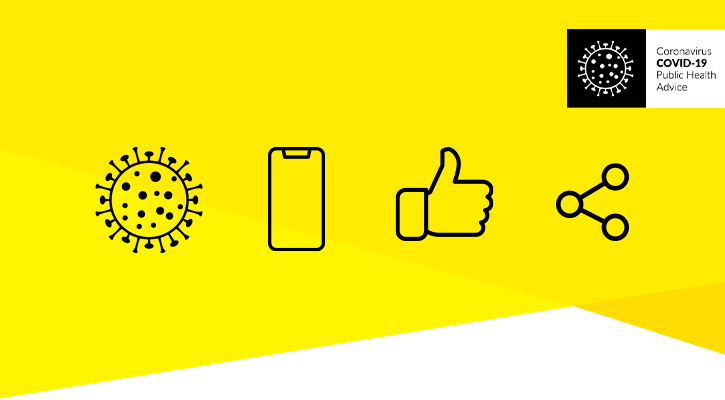
On 12 March 2020, the Government announced that many public places and businesses would close and official St. Patrick's Day celebrations were being cancelled. There was an immediate increase in activity across all our social media channels, particularly on Twitter.
Understandably, there was a lot of concern and uncertainty. People had a wide range of questions about the virus and they came to our social media channels looking for answers.
Responding to the demand
As the weeks went on, our followers continued to grow across every social media channel. There was a huge appetite for information about the virus and people trusted the HSE as a reliable source of information.
This increase in followers meant an increase in the number of conversations we had to monitor online. Doing this helps to ensure that our content is effective. We also had to focus on dedicated community management to respond to people promptly.
Due to the sudden and steep rise in activity across our social media channels, we set up an out-of-hours rota. This provided coverage for evenings and weekends. We also paused our scheduled social media posts so we could fully focus on COVID-19.
Working with subject matter experts
As with any content project, we work closely with subject matter experts. For COVID-19, our subject matter experts are mainly specialists in public health medicine. We work with them, our content design team and HSELive call centre staff in a coordinated way. This ensures that all our communications are consistent across all channels.
For social media content, the subject matter experts help us with responses to some of the clinical questions we get through social media. They also provide expertise when we create certain content for social media.
Tone and voice
The COVID-19 pandemic has connected us with a new and much larger audience. Our social media channels have become a crucial part of a strategic objective – to be the trusted source of health-related information in Ireland.
Using a personal and empathetic tone when responding to our audience has been important across all social media channels. As a result, we have received a lot of positive feedback from the public. On some occasions, it was our availability and caring tone that helped to relieve some anxiety and to avoid what could have become a bigger concern or even a complaint.
Using social media to improve our service
Each day, the social media team notes any themes from the questions we receive through HSE social media channels. Sharing this information with the wider digital team helps to highlight gaps in our knowledge and online information and to identify any emerging issues. This has been useful in proactively preparing responses and developing online content.
Twitter as a helpline
The volume of questions we receive through Twitter has grown rapidly as the pandemic has developed. HSELive’s COVID 19 helpline has had a large and sudden increase in demand, answering over 700,000 calls in 2020. In March 2020, we replied to 12,164 direct messages and tweets compared to 105 for the same month in 2019.
Many people prefer to engage online and our social media channels allow us to answer people’s questions through their preferred channel.
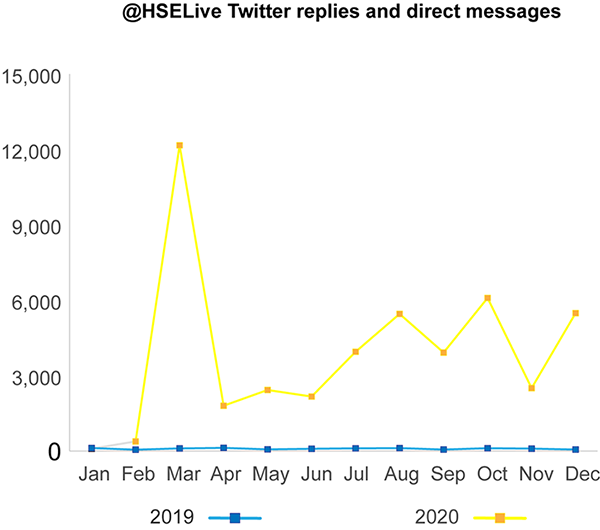
Increase in direct contact with people on @HSELive Twitter during COVID-19
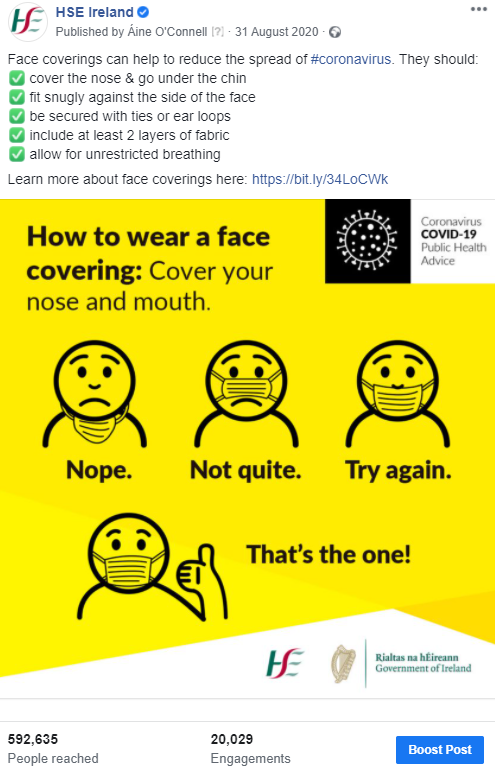
HSE COVID-19 Twitter post ‘How to wear a face covering’
Twitter live-streaming
During the pandemic, we started streaming all of our weekly press briefings on our Twitter channel. This has been very popular with thousands of people tuning in to each briefing.
The stream is also useful for other teams. Due to social distancing, only a small number of journalists can attend the press briefings. The HSE Press Office encourages people to watch the briefing online and they regularly refer queries back to the stream.
TikTok
In May 2020, we established a presence on TikTok for the first time.
Around this time, TikTok donated prominent in-feed ad space to trusted organisations and health authorities. They did this to help the TikTok community stay safe. As part of this initiative, we launched our first campaign on TikTok using the #HoldFirm campaign creative materials and messaging.
We have since followed up with more campaigns on TikTok. These include the ‘Stay home’ campaign, information about the COVID tracker app and the ‘Dear2020’ campaign.
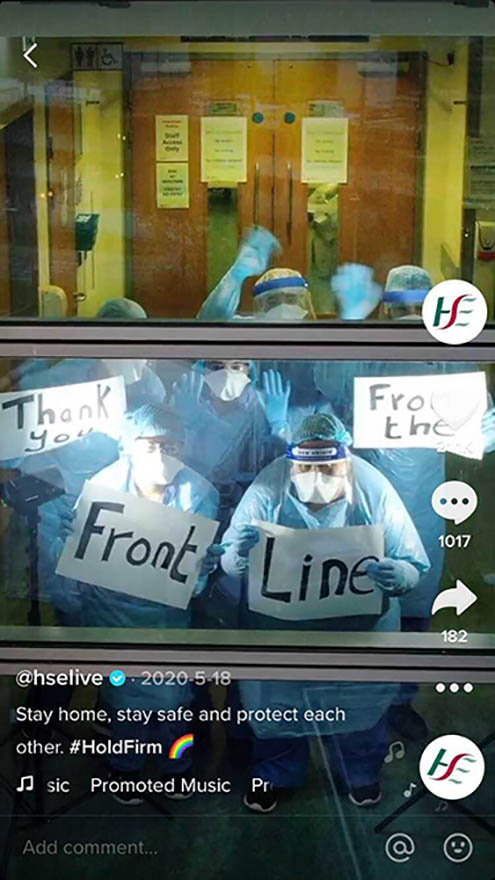
TikTok ‘HoldFirm’ campaign
Instagram
Our Instagram audience grew from 5k to 81k from February 2020 to December 2020. We also had an increase in Instagram private messages.
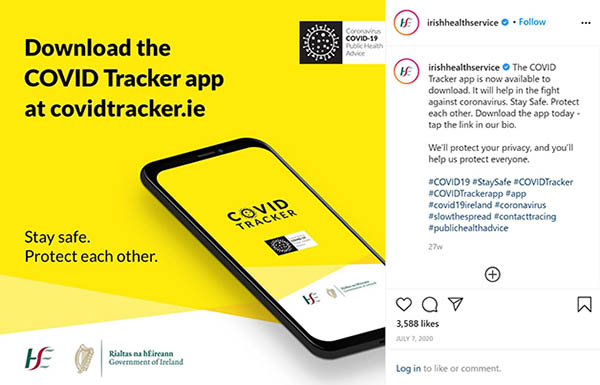
Instagram post for COVID-19 tracker app
By using Instagram stories, we have reached a younger audience and connected with influencers, as many of them only use Instagram. Influencers such as Laura Whitmore, Robbie Keane and Dr. Doireann O’Leary regularly share our content.
Facebook
People want to know more about the virus and they want up-to-date information about public health guidelines and restrictions. We use Facebook as one of the platforms to provide this type of information.
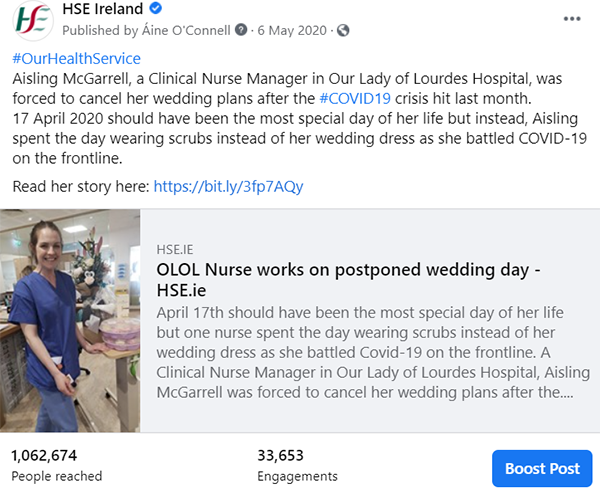
HSE Facebook post May 2020
As a result, our Facebook audience grew by over 55k between March 2020 and December 2020. During this time we also had a huge increase in our engagement on Facebook, with over 70k comments.
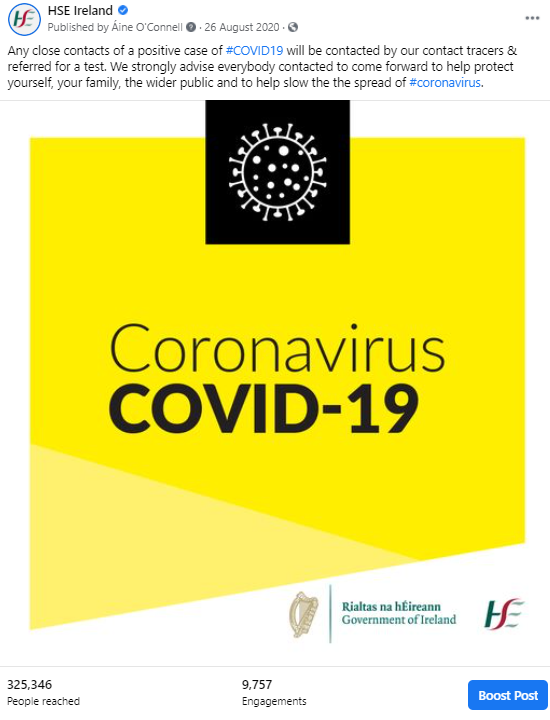
HSE Facebook post August 2020
Support from social media platforms
At the start of the pandemic, social media platforms reached out to us to see how they could help us.
Twitter had worked with us in the past on our vaccine content. During COVID-19 they created a search button for us. This meant that anyone who searched on Twitter for coronavirus or COVID-19 got an alert. This signposted them to factual COVID-19 information on the HSE website.
Facebook put a prominent COVID-19 button on everyone’s newsfeed. This drove 200k hits to our website for 4 weeks. This later changed to a ‘COVID-19 information centre’ that had content from the HSE Facebook pages and other reputable accounts. It also signposts people to HSE.ie. They also gave us an ad coupon for our COVID-19 advertising.
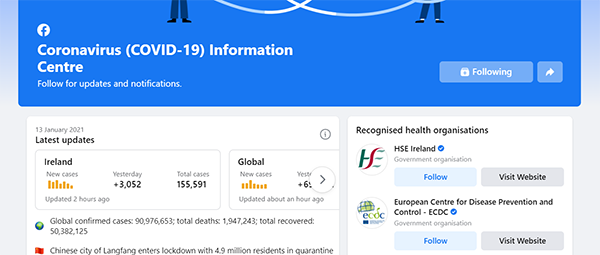
Facebook COVID-19 information centre signposting to HSE.ie
Support from other social networks include
- Google – advertising support for a paid search campaign.
- TikTok – advertising donation and help setting up on the platform.
- LinkedIn – job slots for 6 months for a recruitment campaign.
Using other digital tools
Communication is vital in a time of crisis. While we work remotely, digital tools help us to keep clear channels of communication open internally. They also help us to monitor and analyse external communications activity related to the HSE and COVID-19.
Daily team calls
During the pandemic, information changes rapidly and new advice is announced regularly. It is important to keep the team up to speed so we are confident in responding to queries. To do this, we have daily social media team calls.
Social listening
The ability to track online sentiment and conversations about the HSE helps us to measure any rise and fall in public approval. It also alerts us to any problems in our messaging and information online.
To do this, we use a social media analytics and monitoring tool. Essentially, it gives us an insight into how people are talking about us online.
At the start of the pandemic, we identified keywords to track online and extended these as the pandemic developed. We are now in a good position to use this tool rapidly for future events.
Social media management
Our social media management software tracks all comments across our social media channels. It enables us to quickly review and respond to comments and direct messages in one place. During COVID-19 it became a key tool as the focus shifted from day-to-day work to answering the questions about COVID-19 on social media.
It allows us to keep track of queries and gives us insights into reporting data. It also has time-saving tools such as saved replies.
Looking ahead
As we begin a new year, the rollout of the vaccine has started in Ireland. While we are still publishing COVID-19 messages, we have now begun posting vaccine-related content.
In 2021, our posts have shown the vaccine arriving and the first person to get the vaccine in Ireland. It is not surprising that these have been the most popular posts so far this year. It shows the appetite for the first glimmer of hope we have all been waiting for.